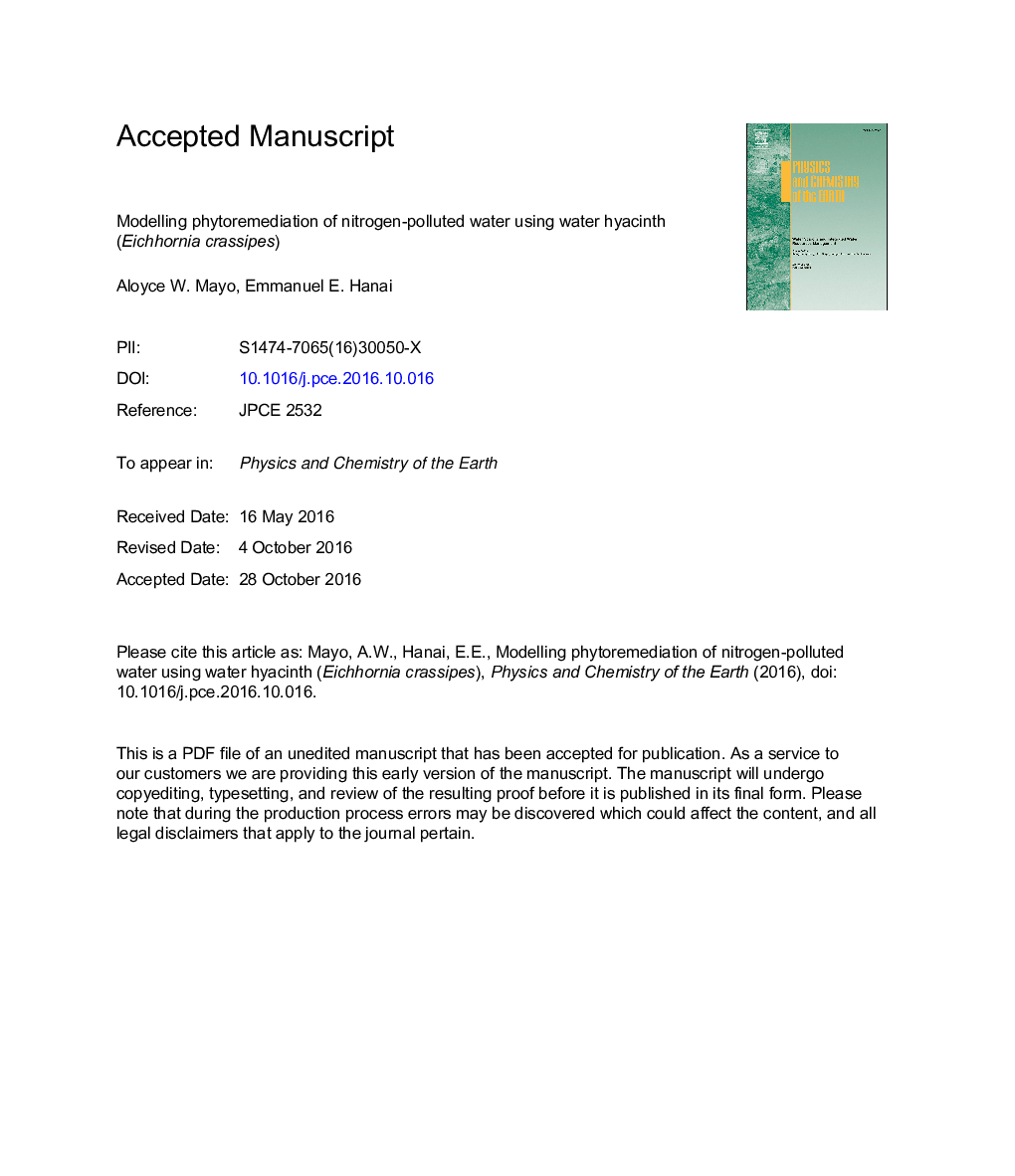| Article ID | Journal | Published Year | Pages | File Type |
|---|---|---|---|---|
| 5784559 | Physics and Chemistry of the Earth, Parts A/B/C | 2017 | 26 Pages |
Abstract
Water hyacinth (Eichhornia crassipes) has a great potential for purification of wastewater through physical, chemical and biological mechanisms. In an attempt to improve the quality of effluents discharged from waste stabilization ponds at the University of Dar es Salaam, a pilot plant was constructed to experiment the effectiveness of this plants for transformation and removal of nitrogen. Samples of wastewater were collected and examined for water quality parameters, including pH, temperature, dissolved oxygen, and various forms of nitrogen, which were used as input parameters in a kinetic mathematical model. A conceptual model was then developed to model various processes in the system using STELLA 6.0.1 software. The results show that total nitrogen was removed by 63.9%. Denitrification contributed 73.8% of the removed nitrogen. Other dominant nitrogen removal mechanisms are net sedimentation and uptake by water hyacinth, which contributed 16.7% and 9.5% of the removed nitrogen, respectively. The model indicated that in presence of water hyacinth biofilm about 1.26Â g Nmâ2dayâ1 of nitrogen was removed. However, in the absence of biofilm in water hyacinth pond, the permanent nitrogen removal was only 0.89Â g Nmâ2dayâ1. This suggests that in absence of water hyacinth, the efficiency of nitrogen removal would decrease by 29.4%.
Keywords
Related Topics
Physical Sciences and Engineering
Earth and Planetary Sciences
Geochemistry and Petrology
Authors
Aloyce W. Mayo, Emmanuel E. Hanai,
